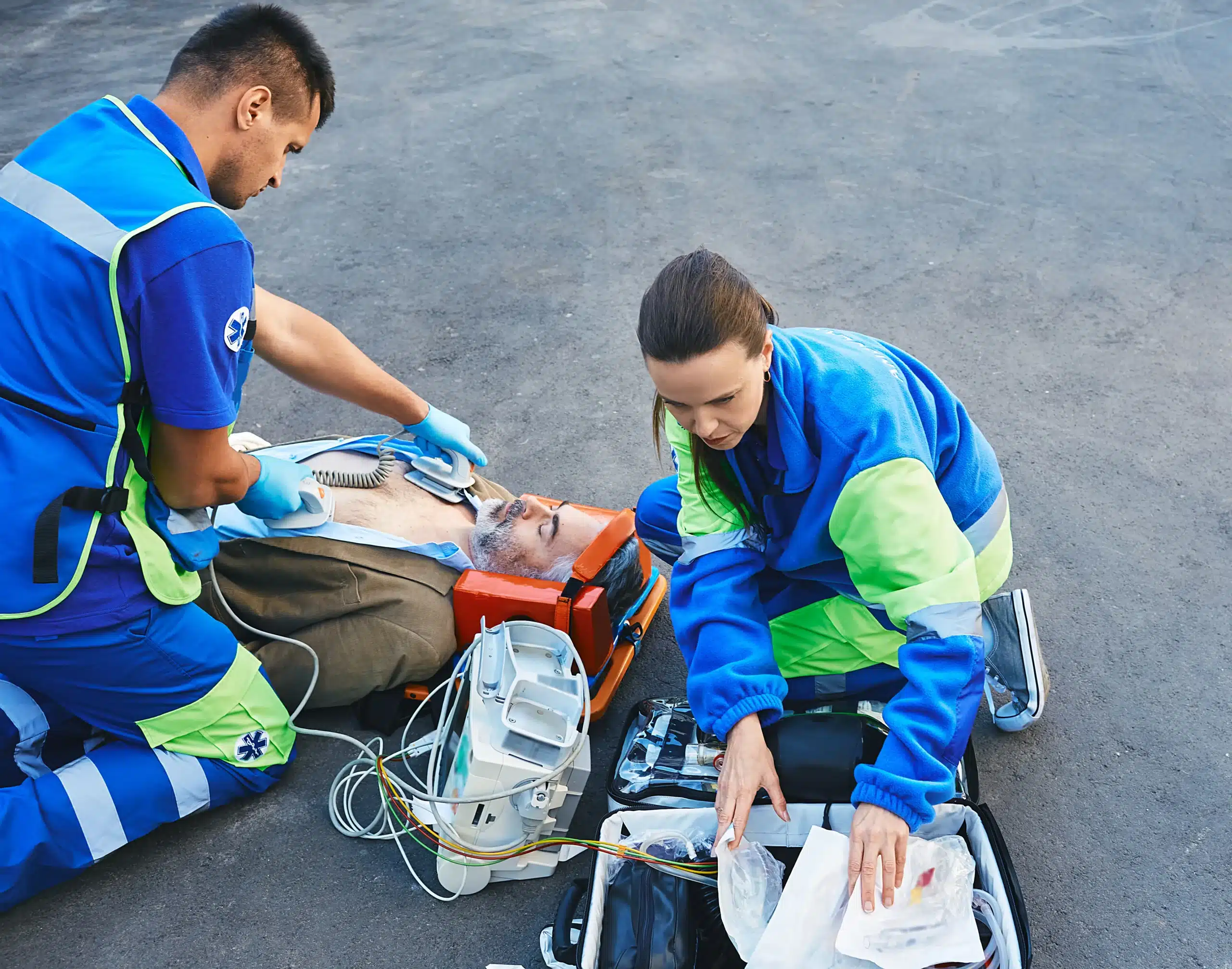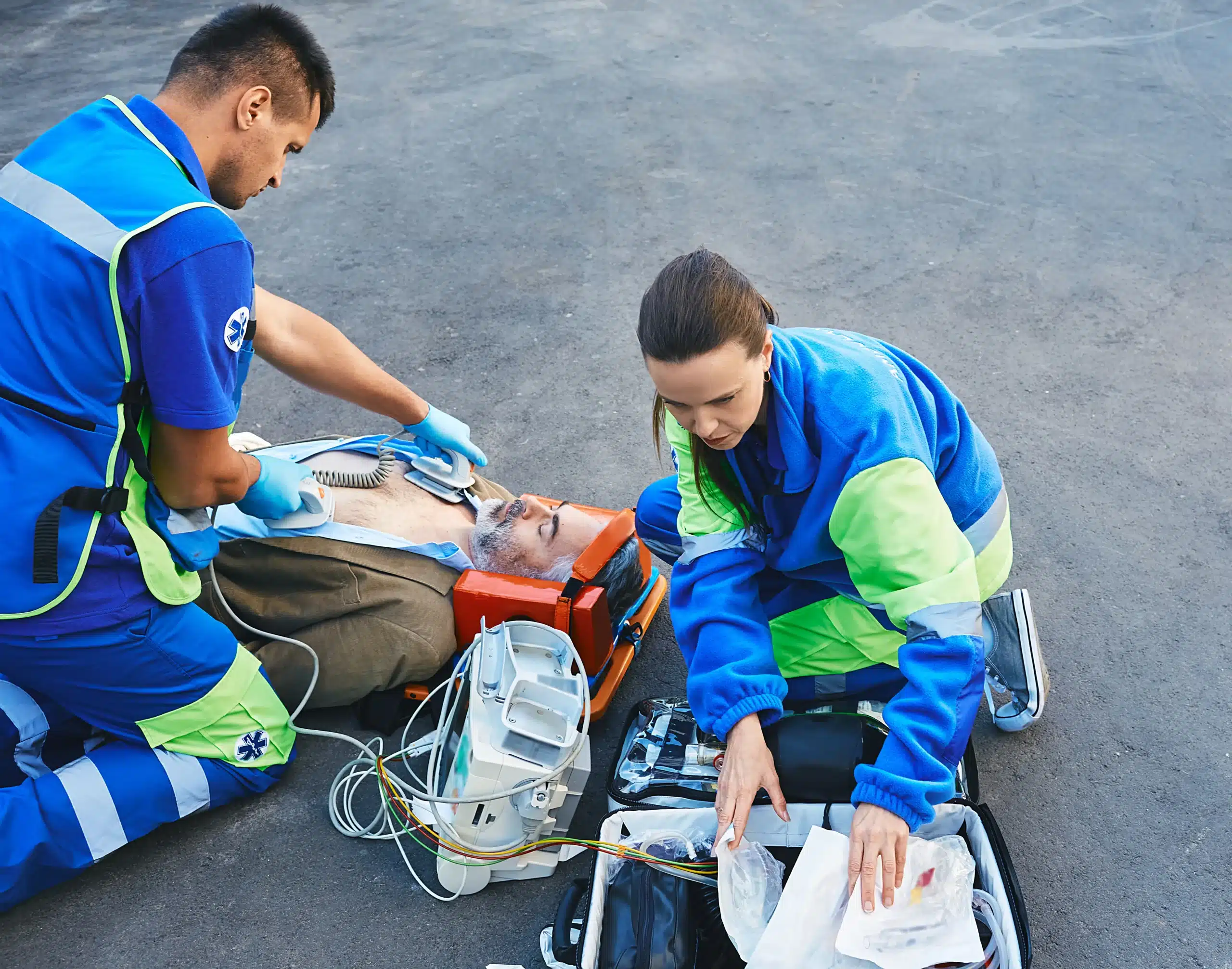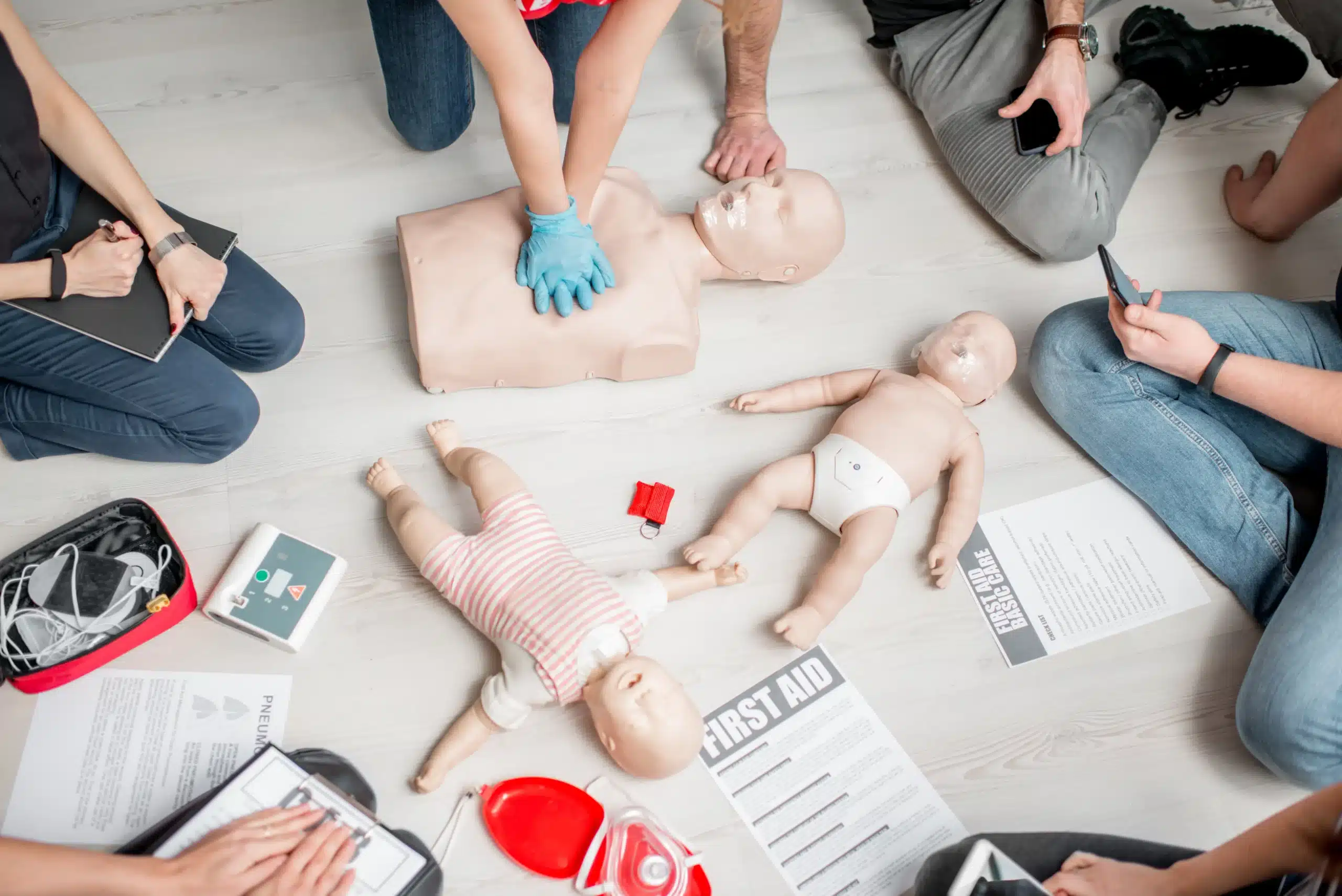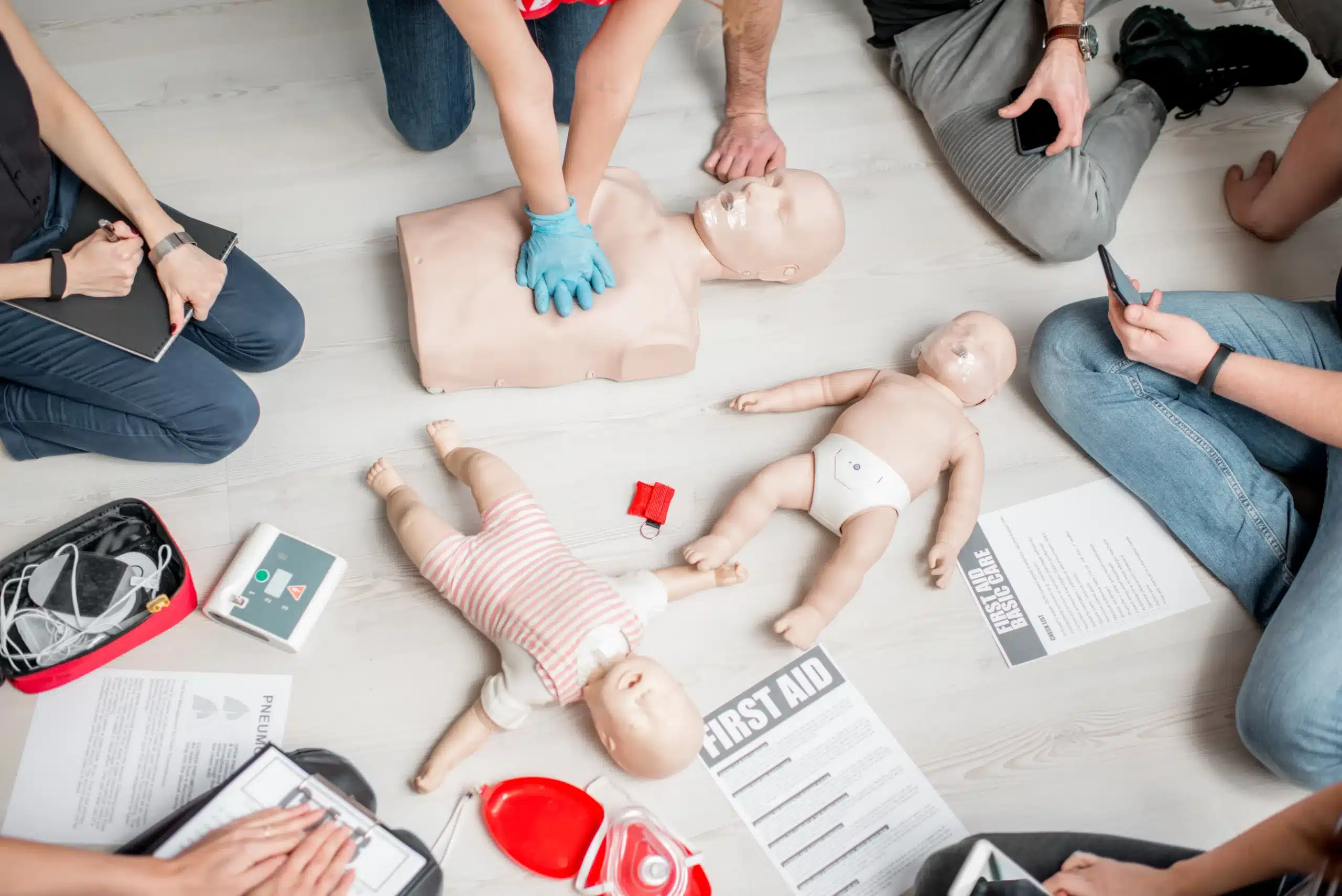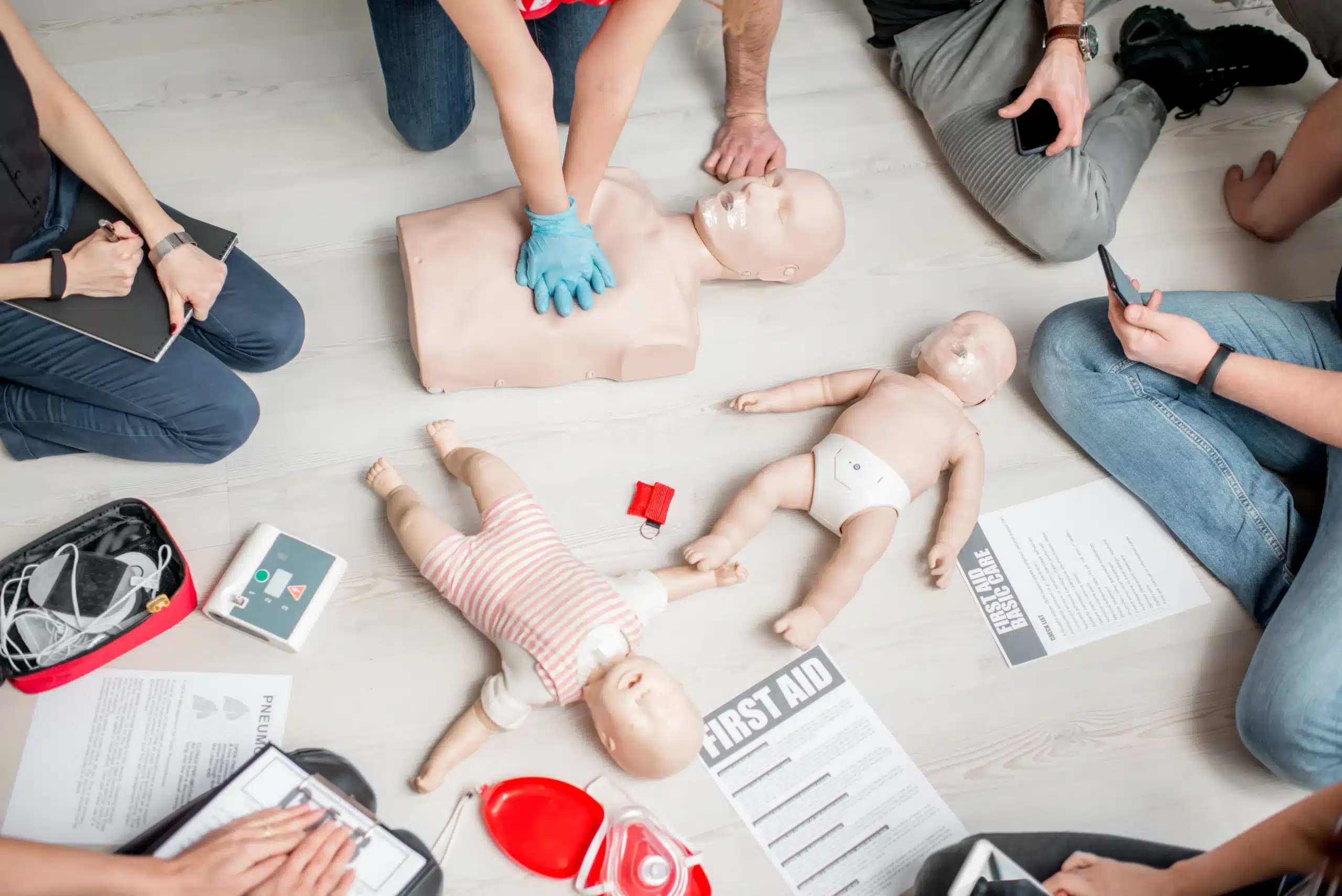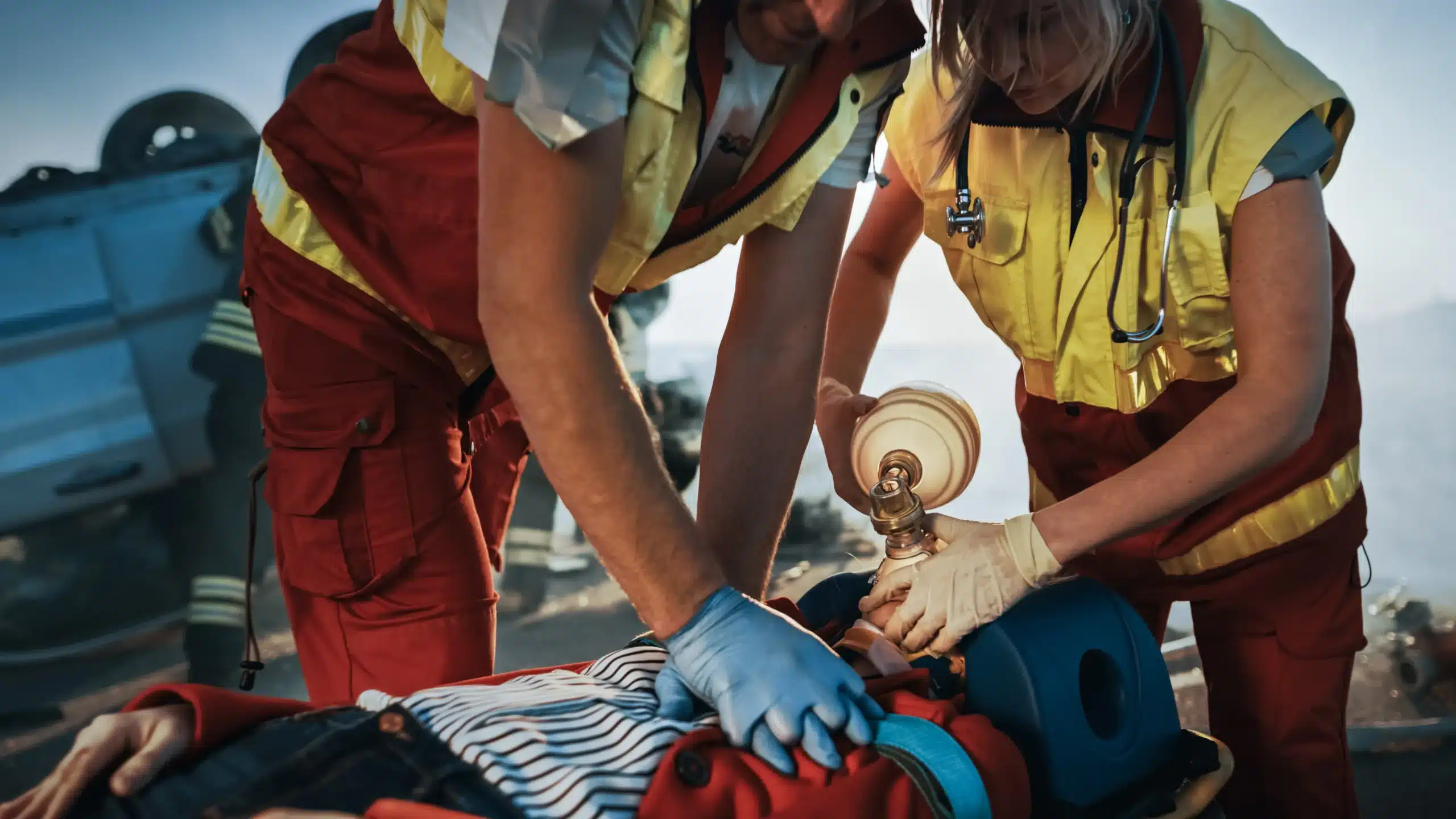Your BLS certification is about to expire, and you’re searching for “bls recertification near me.” You want a course that fits your schedule, meets your budget, and provides the high-quality training you need. This guide is here to help. We’ll walk you through the process of finding the right recertification course, from understanding the core skills and choosing between online and in-person options to comparing providers and navigating the costs. We’ll also debunk common misconceptions and offer practical tips to prepare for your recertification, ensuring you’re confident and ready to renew your life-saving skills.
Key Takeaways
- BLS recertification keeps your life-saving skills sharp. It’s essential for healthcare providers and other professionals to stay current with the latest guidelines and best practices. Find a course that works for you, whether online, in-person, or a blend of both.
- Choosing a reputable provider ensures high-quality training. Look for accreditation, updated materials, and a good balance of cost and value. Think about what’s important to you—location, schedule, and any extras a provider might offer.
- Staying current with BLS guidelines benefits everyone. Regularly reviewing resources and pursuing continuing education demonstrates your commitment to providing excellent care. It also helps you advance your career and expand your skillset.
What is BLS Recertification?
What is BLS & Why Recertify?
Basic Life Support (BLS) certification equips healthcare providers, and other professionals, with the skills to respond to life-threatening emergencies. It’s a crucial credential, but there are some common misconceptions about what it entails and why recertification is necessary. BLS certification is valid for two years. There’s no grace period after expiration, so staying current with your recertification is essential. Renewal requires completing a course and passing an exam. You can renew your certification up to 60 days before it expires, ensuring you’re always prepared to provide critical care. Don’t let your skills lapse—timely recertification demonstrates your commitment to patient safety and high-quality care. At Safety Training Seminars, we offer BLS certification and recertification courses designed to meet your needs and keep your skills sharp.
Key BLS Recertification Skills
A BLS recertification course covers essential life-saving techniques and the latest updates in emergency care. You’ll review and practice skills like CPR and AED use for adults, children, and infants, including both one and two rescuer scenarios. The curriculum also covers high-quality CPR, the Chain of Survival, and differences in rescue techniques based on age. You’ll learn bag-mask techniques, rescue breathing, and how to relieve choking for all ages. BLS training also includes the use of automated external defibrillators (AEDs), basic airway management, and other critical skills. Recertification ensures you’re up-to-date with the current American Heart Association (AHA) guidelines and best practices for delivering effective basic life support. Our BLS recertification classes at Safety Training Seminars cover all these key skills and more, providing you with the confidence to respond effectively in any emergency situation.
Find BLS Recertification Courses Near You
So, you’re ready to recertify your BLS skills? Great! Finding the right course near you doesn’t have to be a headache. This section breaks down how to locate BLS recertification providers and choose the best fit for your needs.
Local BLS Recertification Providers
Start your search by checking with local hospitals, clinics, and community centers. These organizations often offer BLS recertification courses. Word-of-mouth can also be helpful. Ask colleagues or friends who have recently recertified—a personal referral can offer valuable insights. When evaluating providers, consider their reputation, the course material, the instructor’s expertise, the amount of hands-on practice, the certification’s validity period, and the cost. Finding a balance between quality and affordability is key. Safety Training Seminars offers BLS recertification courses in Walnut Creek, serving Concord and Pleasant Hill. We focus on providing high-quality, affordable training.
Find Local Courses Online
The internet is a powerful tool for finding local BLS recertification courses. A quick search for “BLS recertification near me” will generate a list of potential providers. Many providers have websites detailing their courses, schedules, and pricing. You can also use online directories or review sites to compare providers and see student experiences. Don’t underestimate online reviews—they can offer candid perspectives. CPR AED Course offers a helpful guide on locating BLS certification providers.
Choose the Right Provider
Selecting the right BLS recertification provider is crucial for a positive learning experience. Beyond the basics, consider whether the provider offers additional training or specialized courses. For example, if you work in a hospital, you might want ACLS or PALS certification in addition to BLS. The quality of course materials matters. Look for providers using up-to-date, evidence-based materials and equipment. Comfi-Kare CPR offers helpful advice on choosing a BLS training provider. Consider the provider’s teaching approach. Do they prioritize hands-on practice? Do they offer flexible scheduling? Choosing a provider that aligns with your learning style and schedule makes a difference.
Online vs. In-Person BLS Recertification
Deciding how to recertify your Basic Life Support (BLS) skills? Both online and in-person options have unique advantages. Understanding these can help you choose the best fit for your learning style and schedule. There’s even a blended learning option that combines the best of both worlds. Let’s break down the pros and cons of each.
Benefits of Online Recertification
Online BLS renewal courses offer unparalleled convenience. You can study at your own pace, fitting the coursework around your existing commitments. Busy schedule? No problem. Early bird or night owl? Study whenever you’re most alert. All you need is an internet connection, and you can access your BLS recertification materials anytime, anywhere. Many online courses include all study materials with the purchase, streamlining the process. This flexibility makes online recertification a popular choice for those juggling work, family, and other obligations. If you learn well independently and appreciate self-directed study, online recertification might be a great fit. Providers like ACLS Medical Training offer 100% online BLS recertification courses that cover all the essential material. ACLS.com highlights the many benefits of online BLS certification for busy professionals.
Advantages of In-Person Recertification
While online learning offers flexibility, in-person BLS recertification provides valuable hands-on learning. In a classroom setting, you’ll practice essential skills with guidance from a certified instructor. This direct, real-time feedback is invaluable for mastering techniques like chest compressions, rescue breaths, and using an AED. The in-person environment also allows you to ask questions, clarify doubts, and learn from the experiences of your fellow students. For those who thrive in interactive learning environments and value hands-on practice, in-person training offers a more engaging and immersive experience. The Red Cross emphasizes the importance of this hands-on component in their BLS renewal and recertification courses. They also acknowledge the benefits of online learning, offering courses in both formats to accommodate different learning styles.
Blended Learning Options
Looking for a balance between flexibility and hands-on training? Blended learning combines online and in-person instruction. These programs typically deliver the theoretical coursework online, allowing you to study at your own pace. Then, you attend an in-person skills session to practice what you’ve learned under the supervision of an instructor. This format offers a comprehensive learning experience, ensuring you grasp both the theoretical knowledge and practical application of BLS skills. The Red Cross offers blended learning formats for BLS certification and renewal. The American Heart Association also highlights blended learning as a valuable option. This hybrid approach can be particularly helpful for those who appreciate the convenience of online learning but also recognize the importance of hands-on skill development.
BLS Recertification Costs & Accreditation
Understanding BLS recertification costs and ensuring your course is accredited are crucial steps in maintaining your credentials. Let’s break down the expenses involved and how to find a reputable provider.
Typical Recertification Costs
BLS recertification costs can vary, often ranging from $60 to $100. Many factors influence the final price, so it’s essential to research and compare options. Don’t assume all courses are created equal! What might seem like a bargain could lack essential components or not meet the standards required for your profession. A slightly higher cost might include valuable extras like online resources or more hands-on practice. Check our low price guarantee to ensure you’re getting the best value.
Factors Affecting Course Costs
Several factors influence the cost of BLS recertification. One of the biggest is whether you choose an online or in-person recertification course. Online courses tend to be more budget-friendly, while in-person training often includes benefits like direct interaction with instructors and hands-on practice. Location also plays a role; courses in major metropolitan areas might be priced higher due to increased overhead. Finally, the course provider itself influences cost. Some providers include additional perks, like access to online materials or continuing education opportunities, which can affect the overall price.
Ensure Course Accreditation
Before signing up for any BLS recertification course, confirm its accreditation. This ensures the course meets industry standards and that your certification will be recognized by your employer. Look for courses accredited by reputable organizations like the American Heart Association (AHA). The quality of course materials is crucial for effective BLS certification. Safety Training Seminars is an AHA Training Center, offering a range of accredited courses, including BLS and ACLS. We also offer the RQI program for convenient skills verification. Choosing an accredited provider like Safety Training Seminars gives you confidence in the quality of your training and ensures your certification is widely accepted.
BLS Recertification Course Content & Duration
BLS recertification courses cover core life-saving skills and knowledge. Let’s break down what you can expect during your recertification journey.
Average Recertification Time Commitment
Plan to spend roughly three hours on your BLS recertification, including skills practice and testing. While specifics may vary slightly based on the provider and course format, this is a good general timeframe. The American Heart Association offers a range of BLS course options to fit your schedule.
Skills Assessments & Testing
BLS recertification involves skills assessments and testing to ensure you’re up-to-date on the latest guidelines. You’ll review and practice essential skills like CPR, using an AED, and providing relief from choking. Regular practice is key for skill retention, as highlighted in research on preventing skill decay00264-5/fulltext) in basic life support. Your instructor will evaluate your technique and offer feedback. The written test assesses your knowledge of BLS principles and procedures.
Required Materials & Equipment
Typically, all necessary materials and equipment are provided during the course. This includes mannequins for CPR practice, AED trainers, and any other resources needed for demonstrations and skills checks. Providers like the Red Cross offer various course formats—both online and in-person—to make recertification convenient. Confirm with your chosen provider what, if anything, you need to bring to class.
Prepare for Your BLS Recertification
Getting ready for your BLS recertification is straightforward. A little prep work goes a long way toward ensuring you’re ready to renew your skills and knowledge.
Pre-Course Study Recommendations
Before your BLS recertification course, take some time to review the core concepts. Familiarize yourself with the latest BLS guidelines and algorithms. You can often find helpful resources and pre-course materials through your chosen provider, like the American Heart Association. Refreshing your knowledge beforehand will make the recertification process smoother and help you feel more confident on the day of the course. Don’t forget to confirm your BLS certification expiration date. You can usually find this information on your current card, but contacting your certifying organization, such as the AHA, can also confirm your BLS renewal requirements.
Day-of-Course Tips
On the day of your recertification course, arrive a few minutes early to get settled and organized. Dress comfortably, as you’ll be participating in hands-on skills practice. Bring your current BLS provider card with you. Actively participate in the course discussions and ask questions if anything is unclear. The goal is to refresh your skills and leave feeling confident in your ability to perform BLS effectively. Whether you choose an online or in-person class, focus on absorbing the information presented and practicing the techniques demonstrated. Consider supplemental learning materials, such as those offered by the American Red Cross, to further enhance your understanding.
Common Recertification Misconceptions
One common misconception is that BLS recertification is overly expensive. While there is a cost associated with renewing your certification, consider it an investment in your professional development and your ability to provide crucial life-saving care. Many providers, like Safety Training Seminars, offer a low price guarantee, making high-quality training accessible. Another misconception is that BLS certification is a one-time requirement. In reality, regular recertification is essential for staying up-to-date with the latest guidelines and maintaining your skills. Regular BLS recertification demonstrates your commitment to providing the best possible care and ensures you’re prepared to respond effectively in emergency situations. The AHA emphasizes the importance of ongoing training for healthcare providers to maintain their skills and knowledge.
Maintain Your BLS Certification
Once you’ve earned your BLS certification, staying current is key. This not only ensures you’re prepared to respond to emergencies but also demonstrates your commitment to providing high-quality care. Here’s what you need to know about maintaining your BLS certification:
Certification Validity
BLS certification, whether through the American Heart Association or another accredited provider, is typically valid for two years. There’s no grace period after expiration. To remain certified, complete a recertification course and pass the required exam before your current certification expires. Plan and schedule your recertification in advance to avoid a lapse in your credentials. Check with your employer or certifying organization for specific renewal requirements.
Stay Informed About BLS Updates
BLS guidelines and best practices are regularly updated to reflect the latest scientific research and advancements in resuscitation techniques. Staying informed about these updates is crucial for providing effective care. Subscribe to newsletters from reputable organizations like the American Heart Association or the American Red Cross to receive timely updates. Review updated materials and integrate new knowledge into your practice to ensure you’re always using the most current techniques.
Continuing Education Requirements
Maintaining your BLS certification demonstrates a commitment to continuous learning and professional development. By staying up-to-date with the latest guidelines and techniques, you’ll be better equipped to handle emergencies and provide the best possible care. Regularly review resources like those offered by Safety Training Seminars to refresh your knowledge and skills. Consider taking additional courses, such as ACLS or PALS, to expand your skillset and advance your career. Investing in your continuing education ensures you’re prepared for any situation and reinforces your dedication to patient safety.
Top BLS Recertification Providers
Finding the right BLS recertification provider is key to maintaining your skills and confidence. Several respected organizations offer high-quality courses, each with its own approach. Here’s a closer look at some of the top providers:
American Heart Association (AHA)
The American Heart Association is a leading authority in CPR and emergency cardiovascular care. Their BLS Recertification course is designed for healthcare professionals and covers the latest science-based guidelines. You’ll review essential skills like CPR, AED use, and high-quality chest compressions. The AHA also emphasizes the importance of teamwork and communication during emergencies. For those looking for in-person training, many local AHA Training Centers offer courses.
American Red Cross
The American Red Cross offers another widely recognized BLS recertification program. They provide both in-person and online options, making it easy to fit recertification into your schedule. Digital certificates are available upon completion, simplifying record-keeping and verification. The Red Cross BLS course covers adult, child, and infant CPR, along with AED use and other life-saving techniques.
National Safety Council (NSC)
The National Safety Council is a trusted source for safety training across various industries. Their BLS courses equip individuals with the skills to respond effectively to emergencies, often aligning with OSHA guidelines, making them relevant for workplace safety. The NSC offers a variety of training formats, including online and in-person options. You can explore their website or contact a local chapter to find BLS recertification courses near you.
ProCPR
ProCPR focuses on accessible and convenient online BLS certification and recertification. Their courses use video instruction and interactive elements, allowing you to learn at your own pace. This format can be particularly helpful for those with busy schedules or limited access to in-person training. ProCPR’s online platform provides a flexible way to refresh your BLS knowledge and skills. They offer a variety of courses, including BLS, ACLS, and PALS recertification.
Safety Training Seminars
Safety Training Seminars offers a comprehensive approach to safety training, including BLS recertification. They focus on practical skills and real-world scenarios to prepare you for various emergency situations. With a commitment to affordability and quality instruction, Safety Training Seminars provides a valuable option for healthcare providers and other professionals seeking recertification. They understand the demands of busy professionals and aim to make the recertification process as smooth as possible. You can find their course schedule and register online.
Related Articles
- BLS Certification in Pleasant Hill: Your Complete Guide – Walnut Creek CPR Classes
- BLS Renewal in Concord: Your Complete Guide – Walnut Creek CPR Classes
- HeartCode BLS Walnut Creek: Your Certification Guide – Walnut Creek CPR Classes
- BLS Courses in Walnut Creek: A Complete Guide
- BLS for Healthcare Providers in Walnut Creek: A Complete Guide – Walnut Creek CPR Classes
Frequently Asked Questions
How often do I need to recertify my BLS certification? BLS certification is typically valid for two years. You’ll need to recertify before your current certification expires to maintain your credentials. There’s no grace period, so mark your calendar and plan.
What’s the difference between online and in-person BLS recertification? Online recertification offers flexibility, allowing you to study at your own pace and on your own schedule. In-person classes provide hands-on practice and direct feedback from an instructor. Blended learning combines online coursework with in-person skills sessions. Consider your learning style and schedule when choosing the best format for you.
How much does BLS recertification cost? Costs typically range from $60 to $100, depending on the provider, location, and course format. Online courses tend to be more budget-friendly. Look for providers offering a low-price guarantee to ensure you’re getting a good value. Always confirm that the course is accredited by a reputable organization like the AHA.
What topics are covered in a BLS recertification course? You’ll review and practice essential skills like CPR for adults, children, and infants, AED use, and how to relieve choking. The course also covers the latest AHA guidelines for high-quality CPR, the Chain of Survival, and other critical life-saving techniques.
How can I find a BLS recertification provider near me? Start by searching online for “BLS recertification near me.” Check with local hospitals, clinics, and community centers, as they often offer these courses. Ask colleagues or friends for recommendations. When evaluating providers, consider their reputation, course content, instructor experience, and cost. Make sure the provider is accredited by a recognized organization like the AHA.

